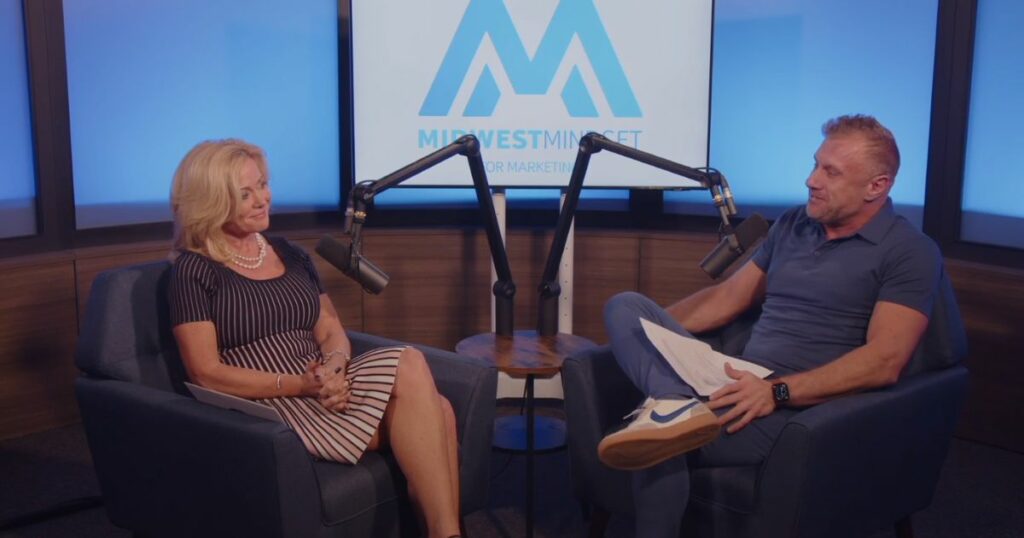Omaha Inbound Marketing for Small Businesses
Omaha inbound marketing is a crucial part of your business’s overall organic marketing strategy, but how can you use it and what is the difference between outbound marketing? Welcome to part two of our three-part series on inbound and outbound marketing.
No matter what kind of business you’re running, selecting the perfect marketing strategy is crucial for your success. That’s precisely why we’ve designed this series to help you understand these two powerful approaches and make informed decisions.
Here’s a quick overview of our series:

An Overview of Omaha Inbound Marketing
Part One: The Differences Between Inbound and Outbound Marketing
In the first part, we explore the fundamental differences between inbound and outbound marketing, their goals, tactics, and how they work together for a well-rounded strategy.
Part Two: What Is Inbound Marketing?
This second part focuses on inbound marketing, discussing its core principles, tactics, and best practices for creating valuable content and nurturing leads.

Part Three: What Is Outbound Marketing?
Lastly, we dive into outbound marketing, exploring its various tactics and how to balance it with inbound marketing for a winning combination.
By the end of this series, you’ll have a clear understanding of both strategies and be better equipped to choose the right approach for your business goals.
Let’s get started on this insightful marketing journey.
Inbound Marketing 101: Drawing Customers In
Content and inbound marketing is all about creating valuable content that attracts, engages, and delights your target audience.
Inbound marketing started to gain significant traction around the mid-2000s with the rise of the Internet, content marketing, and social media platforms. The shift in consumer behavior towards seeking information online and the growing skepticism towards traditional marketing methods like cold calls and advertisements contributed to its increasing popularity.
The goal is to provide helpful, relevant content that pulls people in and keeps them coming back for more. In contrast to outbound marketing tactics like cold calls and paid ads, inbound marketing focuses on earning customers’ attention organically.
Some key elements of inbound marketing include blog posts, search engine optimization (SEO), social media, and email marketing.
When done right, these strategies work together to help your business rank higher on search engine results pages (SERPs) and attract potential customers who are genuinely interested in your products or services.

The Power of Omaha Content Marketing
One of the cornerstones of inbound marketing is content marketing, which involves creating and distributing valuable content to attract and retain your target audience.
The types of content you create can vary widely, from blog posts and videos to infographics and eBooks.
The secret to effective content marketing lies in offering content that is closely aligned with your audience’s interests, desires, and challenges. By providing material that helps and supports them, you demonstrate your value as a reliable source of information. This approach fosters trust and credibility between you and potential customers, making it easier for them to choose your business when they need the products or services you offer.
A great example of inbound marketing are blogs on a specific topic related to your business niche. Suppose you run a gardening supply store. You could develop content that covers various aspects of gardening, such as “10 Essential Gardening Tools for Beginners,” “How to Start a Vegetable Garden,” or “Organic Pest Control Methods for Your Garden.”
I remember when I first started creating blog posts for my business. I was amazed at how much traffic they drove to my website and how many leads they generated. People genuinely appreciated the valuable information I provided, and it helped establish my business as an authority in the industry.

Search Engine Optimization: Getting Found Online
Another essential component of inbound marketing is search engine optimization (SEO).
By optimizing your website and content for search engines, you increase the likelihood of appearing on the first page of SERPs, making it easier for potential customers to find you.
SEO involves several techniques, such as using relevant keywords, creating high-quality content, and building backlinks from reputable websites. These efforts help search engines understand what your content is about and rank it accordingly.
When I first started implementing SEO strategies, I was blown away by the difference it made in my website’s visibility. My organic search traffic skyrocketed, and it’s been a game-changer for my business.

Email Marketing: Building Relationships and Nurturing Leads
Email marketing is another powerful inbound marketing tool that allows you to build and maintain relationships with your audience.
By sending regular, valuable content directly to their inbox, you keep your brand top of mind and encourage customer loyalty.
A well-executed email marketing campaign can help you nurture leads, share news about your products or services, and drive traffic back to your website. The key is to provide relevant and valuable information that your audience will appreciate.
A good example of an email inbound marketing campaign is a weekly or monthly newsletter that offers valuable content tailored to the interests of your audience. Let’s say you run a fitness and wellness business. Your email campaign could include the elements like routines, nutrition tips, mental health, and wellness trends.
In my own experience, email marketing has been instrumental in keeping my customers engaged and informed. It’s allowed me to maintain a personal connection with them and foster long-term relationships.

Social Media: Connecting with Your Audience in Real Time
Social media platforms like Facebook, Twitter, and Instagram offer an excellent opportunity to connect with your audience in real-time.
By sharing valuable content, engaging with users, and participating in conversations, you can build brand awareness and establish trust with your followers.
One of the great things about social media is that it allows you to humanize your brand, showing your audience the people and personality behind the business. It’s also a fantastic way to share your content with a broader audience, as users can easily share and engage with your posts.
Throughout my entrepreneurial journey, I’ve found social media to be an invaluable tool for connecting with my audience and promoting my content. It’s helped me build a loyal following and create a sense of community around my brand.

The Importance of Lead Generation in Inbound Marketing
Lead generation is a critical aspect of inbound marketing. By creating valuable content that attracts potential customers, you can capture their information and nurture them through the sales funnel.
One effective way to generate leads is by offering gated content, such as eBooks or whitepapers, that requires users to provide their contact information in exchange for access.
This not only allows you to capture valuable lead data but it also helps you identify which types of content resonate most with your audience.
In my own business, I’ve seen firsthand how effective lead generation can be in driving sales and growing my customer base. It’s been an essential part of my inbound marketing strategy.

Inbound Marketing vs. Outbound Marketing: The Key Differences
Now that we’ve explored the various elements of inbound marketing let’s briefly discuss how it differs from outbound marketing.
While inbound marketing focuses on attracting customers by providing valuable content, outbound marketing involves actively reaching out to potential customers through tactics like cold calls, direct mail, and paid advertising.
The main difference lies in the approach: inbound marketing is about earning customer’s attention, while outbound marketing is about buying it.
These strategies tend to be more cost-effective and have longer-lasting results than outbound marketing tactics. They also align better with modern consumer preferences, as people are becoming increasingly resistant to intrusive marketing methods.
Inbound marketing often relies on users opting in to receive content, such as subscribing to a newsletter, following a social media account, or downloading a resource. This means that the audience has willingly chosen to engage with the brand, making the interaction more welcome and relevant.

Creating a Successful Inbound Marketing Campaign
To create a successful inbound marketing campaign, consider the following steps:
- Define your target audience: Understand who your ideal customers are, what their needs and wants are, and how you can address them with your content.
- Create a content strategy: Plan out the types of content you’ll create, the platforms you’ll use, and how you’ll promote and distribute your content.
- Optimize your website and content for search engines: Implement SEO best practices to improve your visibility on SERPs and drive organic traffic.
- Engage with your audience on social media: Share valuable content, participate in conversations, and build relationships with your followers.
- Develop an email marketing strategy: Create targeted email campaigns that provide value to your subscribers and nurture your leads.
- Monitor your results and adjust your strategy: Track your success metrics and analyze your data to make informed decisions and optimize your campaign.
Embrace the Power of Inbound Marketing
Inbound marketing has the potential to transform your business, helping you attract, engage, and delight potential customers.
By focusing on creating valuable content, optimizing your online presence, and building relationships through email marketing and social media, you can drive traffic, generate leads, and grow your brand.
As you embark on your inbound marketing journey, remember to stay adaptable, persistent, and open to new ideas. Embrace the power of inbound marketing, and watch your business soar.

Marketing in the age of the algorithm is overwhelming
Are you feeling overwhelmed by the demands of content marketing? Are you struggling to create content that effectively conveys your brand’s value proposition while engaging your audience?
Two Brothers Creative is here to help. As experienced marketers ourselves, we understand the challenges of selecting channels, preparing creatives, and then effectively promoting your content across multiple touchpoints. Our team is prepared to help you with the process.
Two Brothers Creative: Content in a Box
Together we’ll identify actionable steps you need to take, from selecting channels that best capture your audience’s attention to creating memorable storylines that keep them engaged. Say goodbye to confusion, wasted time, and financial underperformance with Two Brothers Creative.
